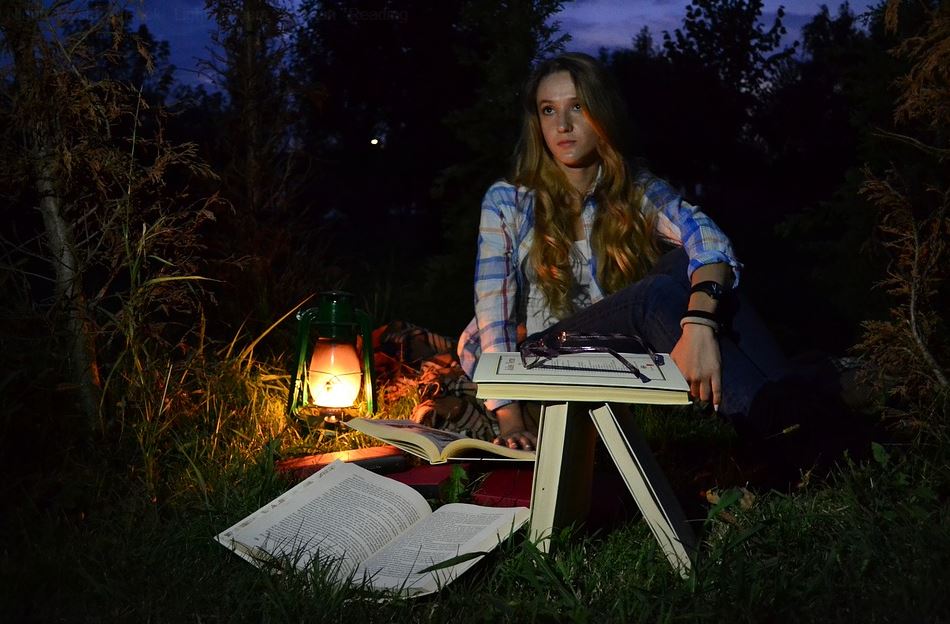In 2015, blogger Amanda Russo posted a humorous piece “Why Halloween Is Actually A Pretty Weird Holiday.” As Russo says, on Halloween we encourage our kids to take candy from strangers. We threaten our neighbors with “Trick or Treat.” We spend a chunk of change buying and giving away sugary treats, often to people we don’t know. We erect cemeteries in our front yards, carve pumpkins into spooky faces, and hang plastic skeletons from the trees. We put on horrific masks, scream, and scare the hoot out of unsuspecting family and friends.
Americans this year will spend 12.2 billion dollars on Halloween. Many celebrants go all out for this affair, buying costumes, wigs, and make-up, decorating their houses a month ahead of time, and setting up outside sound systems featuring spooky music and blood-curdling shrieks. In some neighborhoods, swarms of trick-or-treaters cost homeowners several hundred dollars in treats.
I liked Halloween as a kid. Now I’m not so sure. Some adults appear obsessed with the celebration, and I’m not thrilled to see eight year old boys dressed like ax murderers or girls wearing slutty clothing in imitation of some pop star.
On the other hand, for most folks Halloween is still just an evening when kids dress up like cowboys, astronauts, pirates, or ballerinas, run around their neighborhoods, collect candy, and return home to sort out and enjoy their spoils.
Whatever the case, this autumnal season of goblins and ghosts offers, in addition to sacks of sweets, a great opportunity to explore or revisit some literary works designed to raise the hair on the back of the neck.
You could start with James Whitcomb Riley’s “Little Orphant Annie” and its spooky line: “The Gobble-uns ‘ll git you ef you don’t watch out!” Read that one with some dramatic flair, and watch your six-year-old turn to jelly. You could follow this poem up with Poe’s “The Raven” or his story “The Tell-Tale Heart.”
But for the older kids and for adults during this season of October, let me suggest that master of fantasy, Ray Bradbury.
Bradbury, who died in 2012, is perhaps best known for his one of his novels, Fahrenheit 451, but his short stories, especially the ones written in his early and middle years, deserve equal recognition. In these stories he celebrates all the passions of his life: dinosaurs, rocket ships and Martians, movies, history, writers from Charles Dickens to Thomas Wolfe, and of course, Halloween.
Ray Bradbury loved Halloween. He wrote The Halloween Tree, a novel that examines the origins of Halloween. A number of his short stories and longer works touch on the holiday as well, including Something Wicked This Way Comes, a novel of evil versus good set during the week before Halloween.
If you’re looking for some shivers on October 31, you might start with these gems, made even scarier by their increasing relevance to today’s society:
“The Veldt”—Written back in the 1950s, this story anticipates today’s virtual reality devices with a grim ending and perhaps a moral: We are being eaten by our machines.
“Banshee”—Concocted from the time he spent working in Ireland with director John Huston on the movie, Moby Dick, this is a great story for a chill, windy night. A tale of revenge, with just a little of the #metoo idea embedded in the terror.
“The October Game”—Generally acknowledged as the darkest of Bradbury’s stories, the ending will haunt you for a good while. Though the gruesome conclusion is implied rather than shown, “The October Game” is probably too scary for the younger crew.
It was Ray Bradbury who said, “There are worse crimes than burning books. One of them is not reading them.” So slip some Bradbury between those Snickers Bars and Tootsie Rolls!
—
This article first appeared on Intellectual Takeout in 2018.
[Image Credit: Max Pixel]
















Leave a Comment
Your email address will not be published. Required fields are marked with *